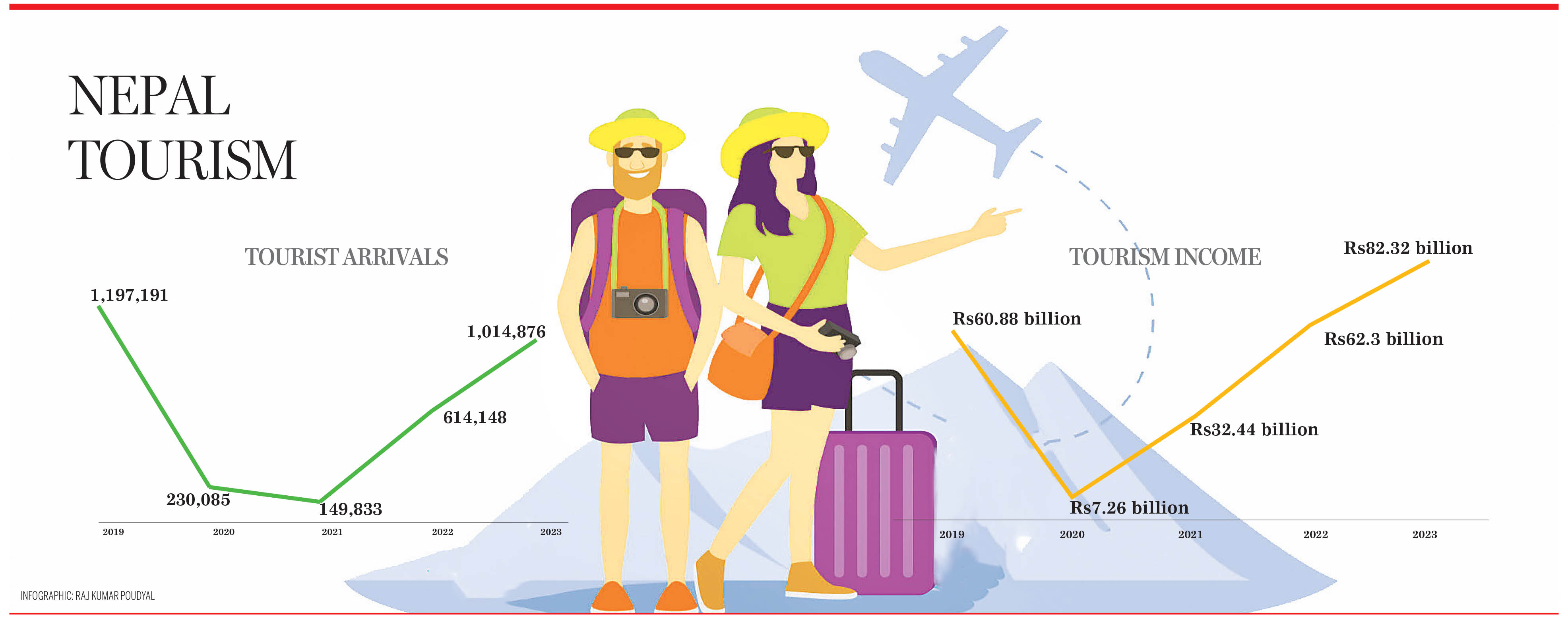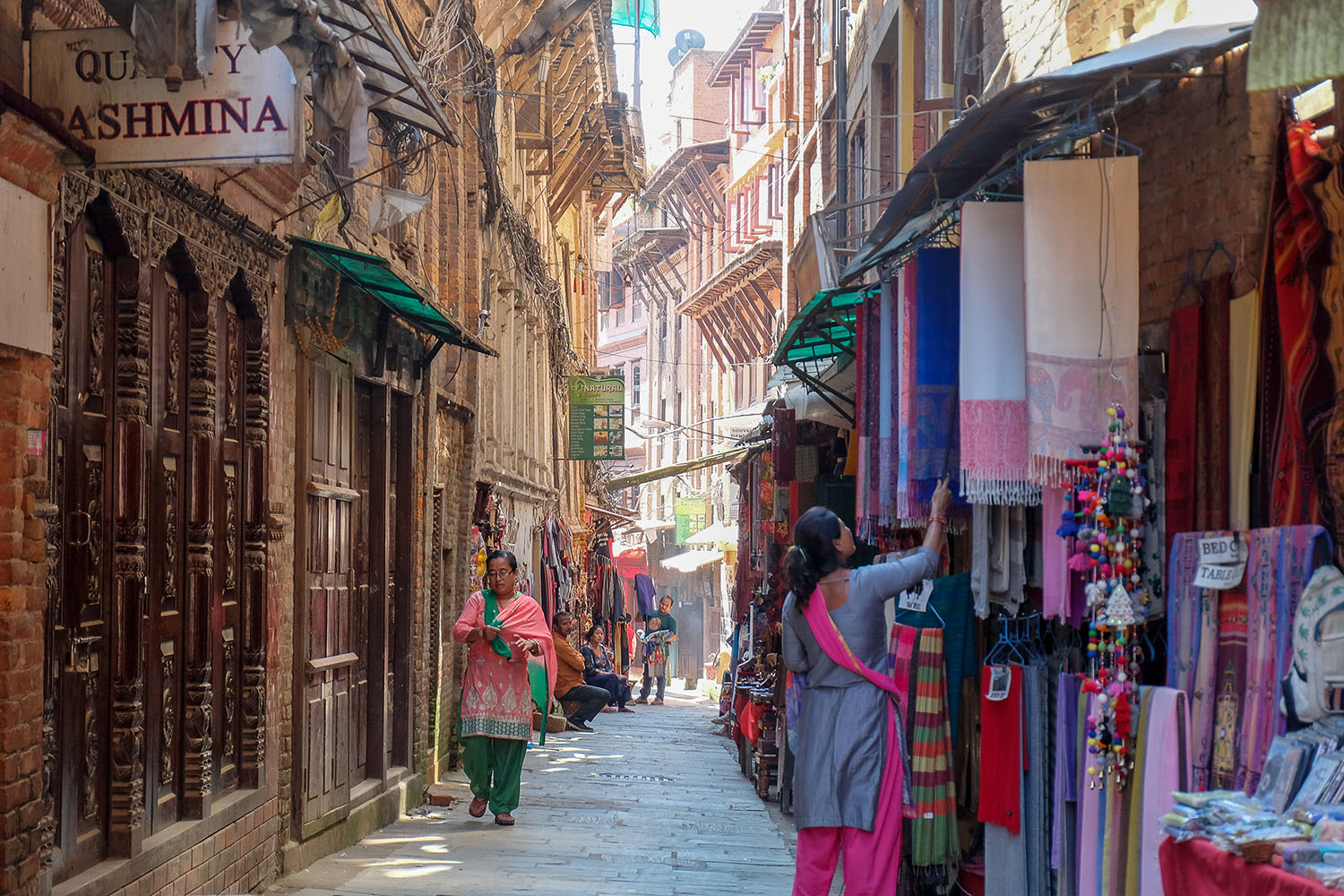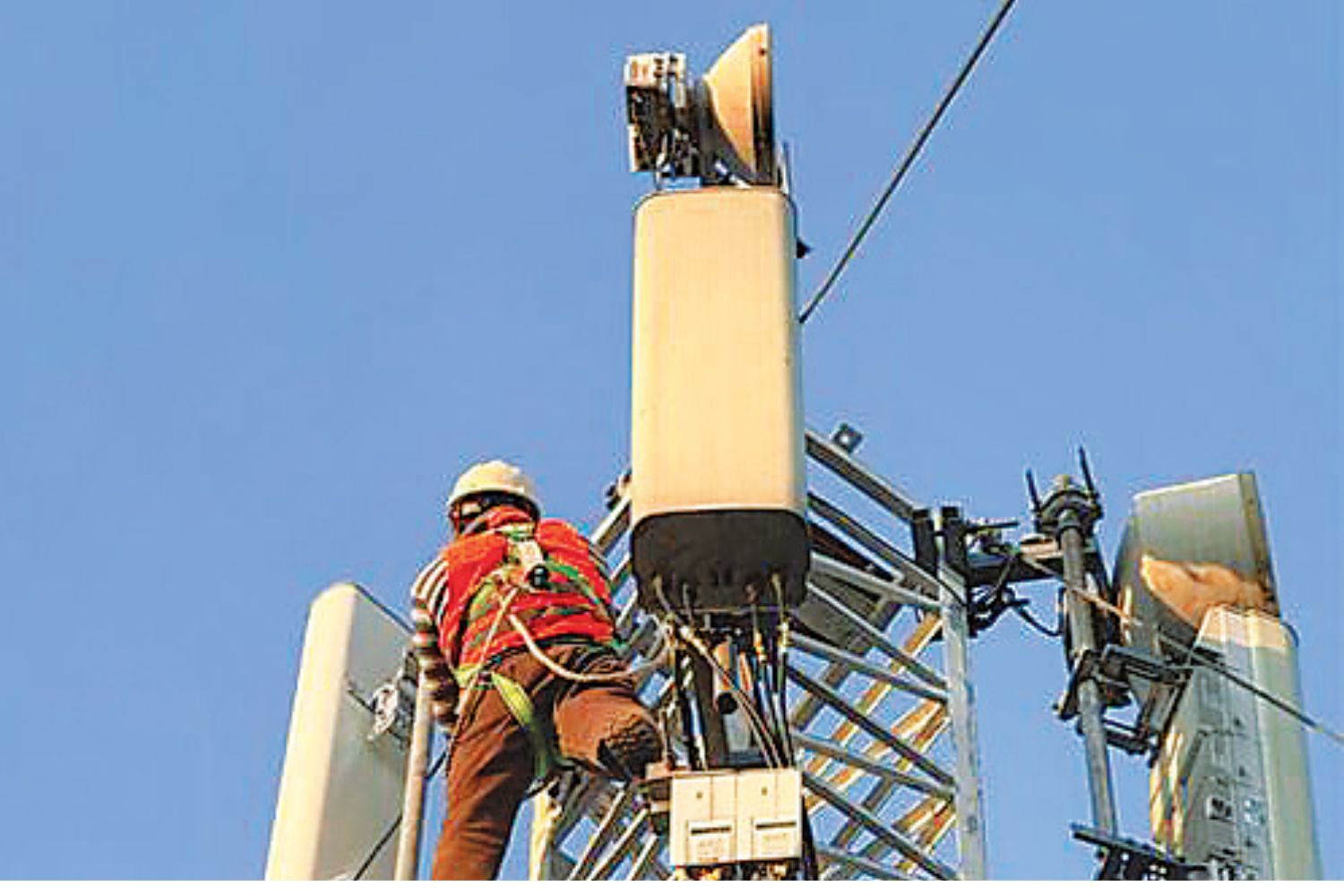Money
The Chinese are coming 3.0
China promises to send more tourists by declaring 2025 as the ‘Visit Nepal Year in China’.
Sanskriti Pokharel
Since May 1, 2024, Nepalis travelling to mainland China have no longer been required to pay visa fees. This move by the Chinese embassy in Nepal is seen as a reciprocal gesture to promote friendship and encourage people-to-people diplomacy between the two nations.
Nepal has been waiving visa fees for Chinese nationals since 2016 and had been hoping for similar treatment.
Then, in June, Beijing made an even bigger announcement.
During the 16th round of the Nepal-China diplomatic consultation mechanism meeting held in Kathmandu, Beijing revealed plans to promote Nepal as a key tourist destination for Chinese travellers declaring 2025 as ‘Visit Nepal Year in China’.
Nepal’s top travel trade entrepreneurs, speaking to the Post, said China had never extended such a gesture to any other country before and described it as an unexpected show of soft power diplomacy, which could give a major boost to Nepal’s tourism sector.
China reclaimed its position as the top spender on international tourism in 2023, as Asia and the Pacific made strides in recovering from the pandemic’s impacts. In 2022, the United States held the top spot. France, Spain, and the US ranked as the most-visited destinations.
According to UN Tourism, Chinese expenditure on travel abroad reached a staggering $196.5 billion in 2023, outpacing the US at $150 billion, Germany at $112 billion, the United Kingdom at $110 billion, and France with $49 billion.
Chinese people travelling worldwide with their wallets wide open after a three-year halt is good news for Nepal as tourism. Increased tourism income allows local economies to flourish and provides livelihoods for many people, especially those in remote mountain areas.
“Chinese tourists are returning after a brief hiatus,” says Deepak Raj Joshi, CEO of Nepal Tourism Board, the country’s tourism promotional body. “The floodgates, however, haven’t opened yet.”
According to Joshi, promotional activities, including marketing efforts, are negligible due to the Covid pandemic that led to China’s three-year shutdown. “Indeed, we need a massive campaign in China even though Beijing has announced that it will celebrate 2025 as ‘Visit Nepal Year in China’”.
The tourism board plans to revamp its digital presence and promotion on online platforms for the Chinese market, including Ctrip, WeChat, and TikTok.
“We are preparing from our side,” said Joshi.
Will the Chinese come?
Chinese arrivals to Nepal crossed the 100,000 mark for the first time in 2013, mainly due to the improved air links between the two countries. According to the tourism ministry’s statistics, around 93 percent of Chinese tourists were first-time visitors to Nepal.
In 2014, Nepal received 123,805 Chinese visitors.
However, the 2015 earthquake and India’s blockade caused arrivals from China to drop to 64,675 individuals in 2015, a decline of 47.76 percent from 2014.
The surface road at the Tatopani border point, where Nepal used to receive many Chinese tourists, was also blocked.
On December 25, 2015, Nepal announced a ‘free visa’ for Chinese tourists, giving them the same treatment as South Asian visitors. In a bid to revive flagging arrivals, the scheme was implemented in January 2016.
Thereon, tourist arrivals from China started rising steadily, and Nepal saw the strongest growth, 46.8 percent, in tourist arrivals from China, with the overall number reaching 153,633 visitors in 2018.
In October 2019, Chinese President Xi Jinping visited Nepal, raising hopes in the local tourism industry that there would be a surge in Chinese tourist arrivals.
Xi became the first Chinese president to visit Nepal since 1996. During his visit, he said he would encourage Chinese tourists to visit Nepal. “Nepal is the first South Asian country to be designated an approved destination for Chinese tourists,” Xi wrote in an article published in Nepali newspapers during his visit.
In 2019, Nepal received a record 169,543 Chinese tourists. But soon Covid hit, and everything changed.
The number fell to 19,257 in 2020. In 2021 and 2022, there were only 6,198 and 9,599 Chinese tourists in Nepal—mainly diplomats and those stranded in third countries—who travelled to Nepal when Beijing enforced never-ending lockdowns.
In March 2023, after three years, Beijing finally allowed its citizens to travel to Nepal as tourists.
The growth momentum resumed a year later, with 12,000 Chinese visitors arriving in March 2024, marking the highest monthly number since Covid.
However, the momentum was short-lived. Arrivals dropped to 9,700 in April, 8,000 in May, and 7,000 in June. It further dropped to 6,000 each in July and August.
Chinese tourists want to visit Nepal but complain about limited air connectivity.
Yang Wei, a Chinese woman living in Nepal, says, “Due to limited connectivity, it is not very convenient to travel to Nepal.”
“This leads many to opt for nearby countries with better connectivity, such as Thailand and Vietnam.”
Wei also notes that the limited number of Chinese guides in Nepal is a concern.
“Many Chinese tourists prefer destinations where they can communicate easily. The number of Chinese-speaking guides in Nepal is small.”

During the heyday, when Chinese tourists started flooding Nepal, coming neck-to-neck with Indian arrivals, most hoteliers started changing their bathroom buckets. When it comes to bathing, Indians prefer running water over buckets.
When arrivals crossed the six-digit mark, there was a dramatic shift. Hotels and restaurants began to thrive, and Chinese tourists were everywhere.
Hotels started serving free noodles in rooms to welcome Chinese visitors. Soon, Chinese language services, including guides, brochures, and signage were rolled out at major tourist destinations, including the immigration office at Kathmandu’s Tribhuvan International Airport.
The Nepal Tourism Board’s websites, as well as those of tour, trekking, and expedition operators, began offering Chinese language services.
Among all destinations, a major change was occurring in Pokhara.
The release of the Chinese movie ‘Up in the Wind’ in 2013 set off Chinese travel interest in Nepal.
Filmed in the tourist spots of Kathmandu, Pokhara, and Chitwan, the film made Nepal popular among Chinese travellers, leading to a surge in arrivals, particularly to Pokhara in the Annapurna foothills.
Pokhara saw more Chinese visitors than Kathmandu, with many Chinese tourist guidebooks listing the lakeside city as one of the “top ten places in the world to see before you die”.
Tourism entrepreneurs painted the town red. Most of the spots in Pokhara, decorated with Chinese-themed sign boards and menus, transformed into Chinatown. Chinese cuisine started dominating the hotel menus in Nepal, which once served only Indian and Continental dishes.
Flight connectivity between Nepal and China reached new highs. In July 2019, Nepal and China signed a revised bilateral air services agreement, allowing 98 weekly flights between the two countries on a reciprocal basis, up from 70 flights per week.
Six Chinese carriers—Air China, China Southern, China Eastern, Sichuan Airlines, Cathay Dragon and Tibet Airlines—were operating flights to Nepal.
The Chinese tourist boom, however, turned into a bust after Covid.
Yang feels something is missing, as the signage and websites in Chinese are no longer available.
“Providing better language support at airports, hotels, and tourist spots could enhance their overall experience. This would, in turn, encourage the Chinese to visit Nepal again. Nepal should, definitely, consider these issues.”
However, notorious roads and unreliable skies are taking a heavy toll on Nepal’s tourism growth, particularly among Chinese travellers.
Achyut Sigdel, a Chinese tourist guide who has served more than 5,000 Chinese tourists since 2004, is optimistic that the arrivals will rise again.
“But Nepal must assure visitors that they are safe while travelling,” says Sigdel.
He said that one of the key challenges tourists face is the long and arduous travel times. For example, Chitwan is only around 170 km from Kathmandu, but the journey often takes 8-9 hours due to poor road conditions.
“This is extremely frustrating for any traveller,” says Sigdel.
The skies are equally troublesome. In August, a helicopter crashed near Kathmandu, killing four Chinese aboard. Nepal has a woeful track record on aviation safety, and the Himalayan republic has seen a spate of deadly plane and helicopter crashes over the decades.
Abhimanyu Khadgi, another tourist guide, says developing proper infrastructure is crucial.
“Chinese travellers are drawn to a wide range of experiences, from trekking in the Himalayas to staying in luxury hotels, buying traditional handicrafts, and meditating in religious places like Lumbini.”
Lumbini holds deep significance for Chinese tourists, especially for those who follow Buddhism. The tranquillity, ancient stupas, and the Ashoka Pillar attract religious pilgrims and spiritual seekers from China.
Not limiting themselves to the city, they embark on trekking routes like Poon Hill, Mardi Himal, the Annapurna Circuit, the Annapurna Base Camp and the Everest Base Camp treks.
“China is a big market for us. While we have planned big promotional activities in major Chinese cities, the government must also ensure that roads and skies are safe,” said Joshi, the chief of the Nepal Tourism Board. “The more comfortable Chinese tourists feel in a destination, the more likely they are to return.”




 7.15°C Kathmandu
7.15°C Kathmandu





